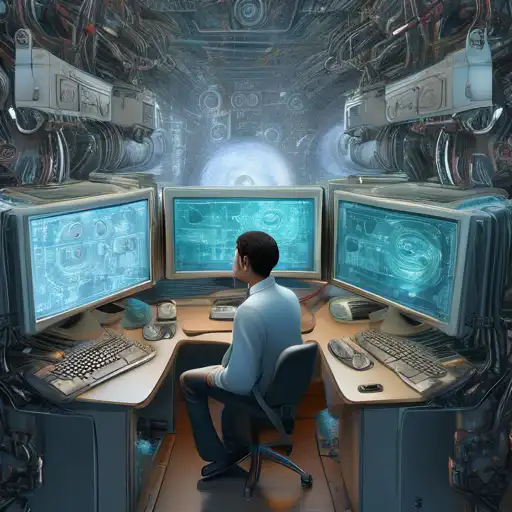Introduction to Computer Vision
Computer vision is a field of artificial intelligence that trains computers to interpret and understand the visual world. By using digital images from cameras and videos and deep learning models, machines can accurately identify and classify objects — and then react to what they "see."
How Computer Vision Works
At its core, computer vision involves the automatic extraction, analysis, and understanding of useful information from a single image or a sequence of images. It involves the development of a theoretical and algorithmic basis to achieve automatic visual understanding.
Key Components of Computer Vision
- Image Acquisition
- Image Processing
- Feature Extraction
- Object Detection
- Object Recognition
Applications of Computer Vision
Computer vision technology is being used in a variety of industries, from healthcare to automotive. Here are some of the most common applications:
- Healthcare: From detecting tumors in radiology scans to monitoring patient movements, computer vision is revolutionizing healthcare.
- Automotive: Self-driving cars use computer vision to understand their surroundings and navigate safely.
- Retail: Automated checkout systems and inventory management are just a few ways retail is benefiting.
- Security: Facial recognition and surveillance systems are enhancing security measures worldwide.
The Future of Computer Vision
As technology advances, the potential applications for computer vision are boundless. With the integration of artificial intelligence and machine learning, computer vision systems are becoming more accurate and efficient. The future may see computers with visual capabilities surpassing human accuracy, opening up new possibilities in every field imaginable.
Challenges Ahead
Despite its advancements, computer vision faces several challenges, including the need for large datasets for training, understanding context, and real-time processing limitations. Overcoming these hurdles is essential for the widespread adoption of computer vision technologies.
Conclusion
Computer vision is transforming how machines interact with the world around them. By teaching machines to see, we're opening up a world of possibilities across various industries. As we continue to advance in deep learning and computational power, the future of computer vision looks brighter than ever.
